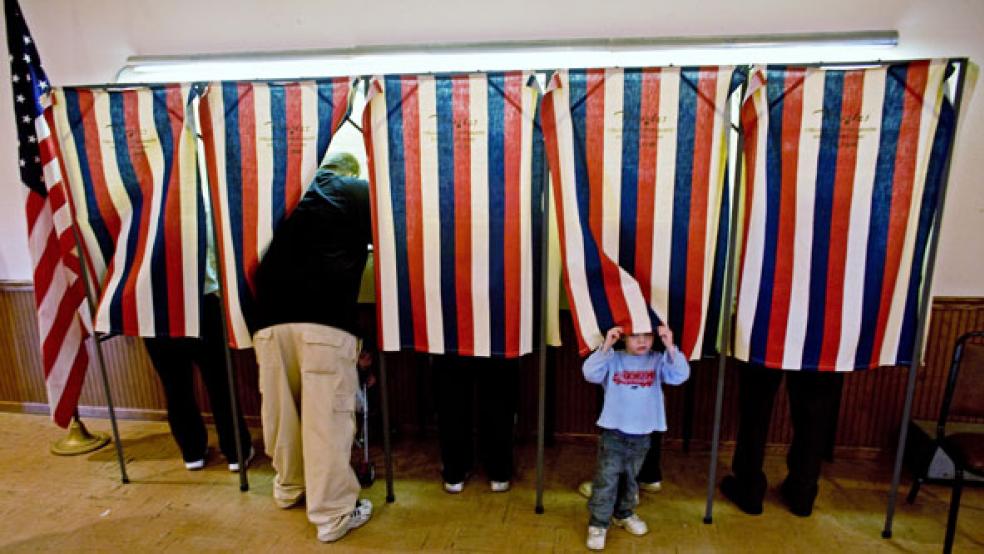Young voters have turned out in droves for Sen. Bernie Sanders of Vermont throughout the Democratic presidential primary season, rallying to his call for income equality as he bashes Wall Street and the political Establishment.
But with former Secretary of State Hillary Rodham Clinton likely to sew up the Democratic nomination with a strong showing in in Pennsylvania and four other Northeastern and Mid-Atlantic states late today, there are serious doubts whether that youthful enthusiasm will carry over to the general election campaign.
Related: Super Tuesday No. 4: The End of the Line for Bernie Sanders?
Much, of course, will depend on how hard Sanders works to reconcile with Clinton and mend deep fissures within the party between the young, liberal activists backing him and the older, more moderate Democrats who have supported Clinton.
A recent McClatchy-Marist poll found that a startling 25 percent of Sanders’s supporters – many of them young people –say they couldn’t vote for Clinton this fall if she becomes their party’s nominee, even if she were running against Republican billionaire businessman Donald Trump.
Even under the best of circumstances, young voters have not been the most dependable faction of the electorate in either party. Only 41 percent of Americans 18 to 29 years of age voted in the 2012 presidential election, which was down from a record high of 48 percent in 2008, according to election records. By contrast, the overall turnout of qualified voters four years ago was 59 percent.
With much at stake in the presidential and congressional elections this fall, billionaire environmentalist Tom Steyer announced on Monday that his super PAC will spend $25 million this year to rally young voters in seven key battleground states, according to The Washington Post. Steyer is making his second big foray into national politics in two years in a bid to heighten awareness on college campuses of the threat of climate change.
Related: Sanders to Clinton: Here’s What My Support Will Cost You
"This generation is super smart, incredibly passionate, and strongly prefers candidates who embrace clean energy solutions,” Steyer said in a statement. “That’s why I’m so excited to support the next generation in making sure their voices resonate at the ballot box.”
Steyer’s super PAC, NextGen Climate Action, will target young voters on 203 college campuses in Pennsylvania, Iowa, Ohio, New Hampshire, Nevada, Illinois and Colorado. All of these states could prove critical in the Democrats’ drive to retain control of the White House and win back a majority in the Senate.
Steyer, the founder of a highly successful hedge fund, so far has had at best mixed success in politics. NextGen Climate Action spent $74 million during the 2014 midterm election campaign in support of Democratic congressional candidates, but came up short in two high-profile Senate campaigns that were won by Republicans Cory Gardner of Colorado and Joni Ernst of Iowa.
Now he is counting on a pricey campaign on college campuses to promote concern about climate change and help turn out the vote this fall, citing a survey finding that 80 percent of Americans 18 to 34 years of age favors a “complete transition to clean energy by 2030.”
But already there are questions about how successful he will be this time.
Related: In a Season of Nicknames, ‘Lucky Don’ Seems Right for Trump
A Harvard University Institute of Politics survey released this week raises doubt that climate change is an issue that can mobilize large numbers of young people aged 18 to 29. While the economy, jobs and terrorism head the list of issues that young people are most concerned about, only three percent cited the environment as a major concern.
But the survey also contained highly positive news for the Democrats heading into the fall campaign. Three quarters of the young voters said they are highly focused on the campaign and issues, and 64 percent said that they “definitely” or “probably” will vote in the general election.
Over the past year, there has been a dramatic net shift among young people towards the Democratic Party, according to the findings. And 61 percent now say they prefer to see the Democratic presidential nominee win this fall, compared with 33 percent who would favor the Republican nominee. The survey found Clinton with a commanding lead over Trump in a fall matchup, with 61 percent of likely young voters supporting her to just 25 percent for Trump. An additional 14 percent said they were not sure.
Related: Can Elizabeth Warren Save Bernie Sanders?
But Clinton continues to be dogged by negative views of her honesty and stands on key issues, and the former senator and First Lady suffers from a 16-point net unfavorable rating among the young people interviewed. Sanders is the only candidate in either party with a net positive rating – of 23 points – while Trump is saddled with a rating of minus 57 points. Among young Republicans, 37 percent view Trump favorably and 57 percent view him unfavorably.





